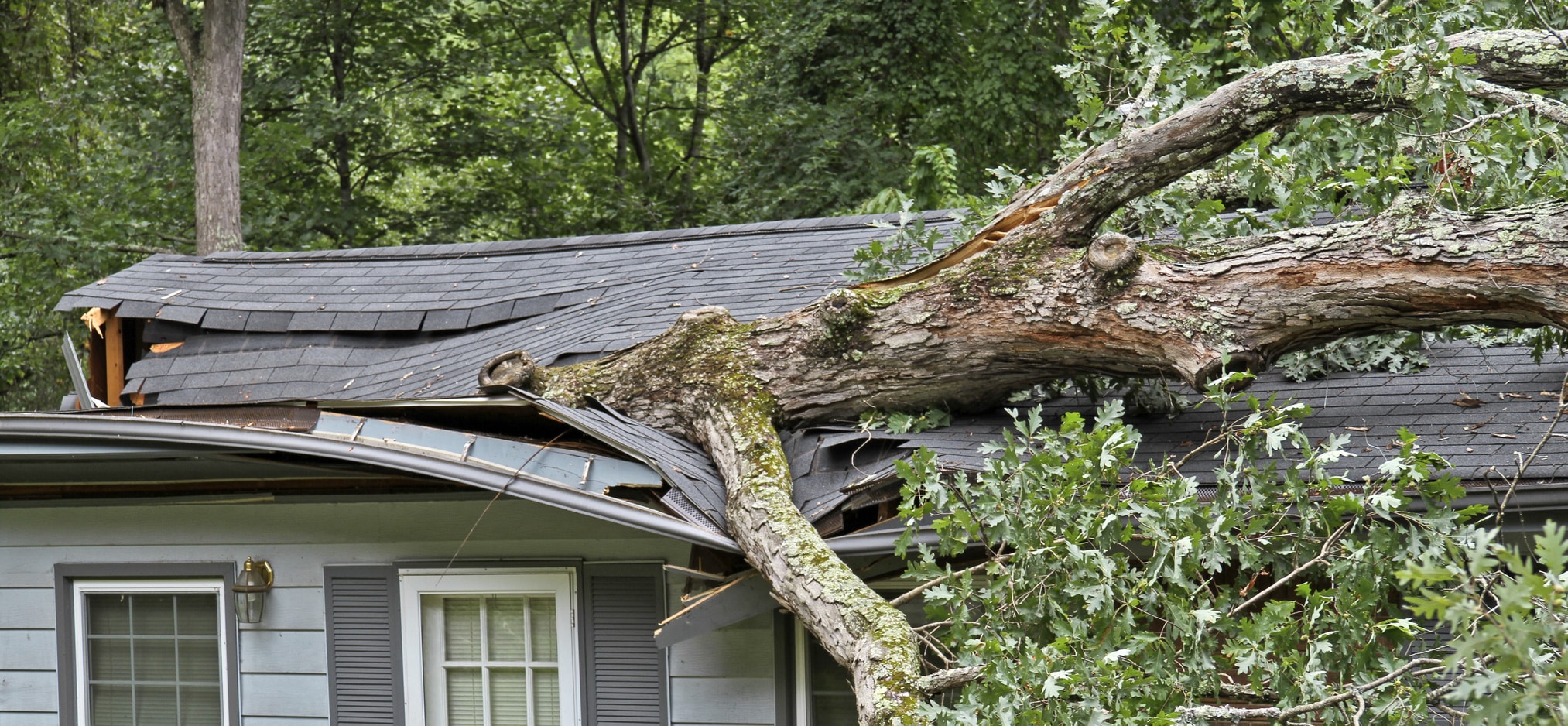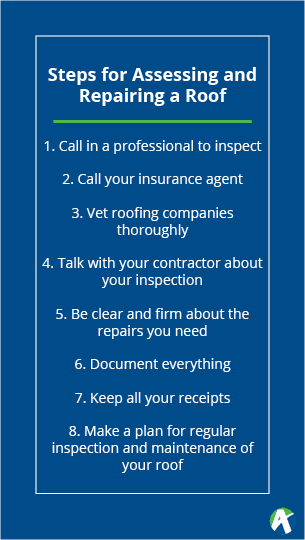
21 Jun The Do’s and Don’t of Assessing a Roof After a Storm
 The clouds clear, the storm passes, and now you need to know if damage was done. If you live in an area prone to strong weather events, you’re no stranger to the feeling after the storm passes. You need to know what, if any, damage your home or building may have suffered. Before you pull the ladder out of the garage and take a look, follow these tips of do’s and don’ts of assessing roof damage after a storm.
The clouds clear, the storm passes, and now you need to know if damage was done. If you live in an area prone to strong weather events, you’re no stranger to the feeling after the storm passes. You need to know what, if any, damage your home or building may have suffered. Before you pull the ladder out of the garage and take a look, follow these tips of do’s and don’ts of assessing roof damage after a storm.
Do’s:
Call Your Insurance Agent
One of your first steps after a strong storm event is to call your insurance agent. If you have a good agent, they should have your best interests in mind. Leverage their expertise and knowledge of your policy. Talk to the insurance experts first before jumping the gun on filing a roof claim or having an unscrupulous roofing contractor try to file one for you. Get all the information about your coverage so you know what is, and isn’t covered. Insurance claims can get mired in policy language, so know what you’re getting into before you go down this road, especially for commercial claims.
Get An Independent Professional Inspection Before Replacement
Before you set foot on your roof, bring in the professionals. We recommend an independent third-party inspector. Not because it’s what we do, but because we hear from people all the time that they were forced into a contract with a storm chaser, or their roof didn’t really have storm damage or the replacement of their roof went poorly because they trusted a storm chaser. With an independent inspector, you can rest assured that they’re giving you an honest and transparent report of any damage and whether your roof needs to be replaced.
Document your Damage
If there is damage and you get an inspection, make sure the person inspecting takes photos of everything. Thoroughly document the damage to protect your home or property. Take photos and video from the ground. Look for leaks or water spots on the ceiling and walls. Shingles or roofing product on the ground and damage to siding also are indicators of damage. Don’t overlook anything when it comes to documenting your damage.
Get Repairs Done Sooner Rather Than Later
There’s a lot to be done after a significant weather event, most times, you can allow the claims process to take its course. However, if there is active water intrusion occurring, then it is important to move swiftly to find someone you trust to make the repairs before the damage gets any worse. Water damage wreaks havoc on homes and buildings. The longer a leak is left unrepaired, the more costly potential repairs could be.
Don’ts:
Let Anyone On Your Roof Until You’ve Vetted Them
Unfortunately, we see bad roof replacements all the time. There are good and bad contractors out there, so make sure you don’t end up with the latter. Fully vet a contractor before ever letting them on your roof. Check references, review sites, ask for recommendations from friends and family, and look for someone in your community with a great history of service.
Go Up On a Roof That’s Sagging or Damaged
It’s hard to know the level of damage to a roof before you go up and check things out, but doing that is extremely dangerous. Water leaks and significant water damage can make roofs unstable. Going up on an unstable roof could end in a situation much worse than needing a roof repair or replacement. Keep yourself safe and leave inspections to the professionals. There are other ways you can check the status of your roof without risking your safety.
Hire The First Person To Knock On Your Door
We recently wrote a blog about the people who show up on your doorstep after a storm. These people try to cash in on replacing roofs. They travel around the country chasing storms to replace roofs and then move on. Not all of these people are neglecting your best interests, but make sure you do your research before letting them up on your roof.
File A Claim for the Sake of Filing a Claim
The roof claims industry is big business, and there are some clandestine parties like storm chasers and some public adjusters that take advantage of an easy sales ploy: you can get a new roof that someone else pays for. In this case, someone else is your insurance company. But just because you file a claim doesn’t mean you will get your roof replaced. Be scrupulous and cautious when someone says that you have storm damage to your roof. Roofing products are designed to withstand weather like hail and wind, and there is no need to risk a false claim on your record with your insurance company based off of someone’s hunch or greed.
No one wants to deal with storm damage. But if it does happen, be proactive in protecting yourself. Your roof is an important investment. Get it repaired or replaced correctly the first time. If you think you have damage to your roof and need an outside perspective, give us a call and we’ll be happy to help!


